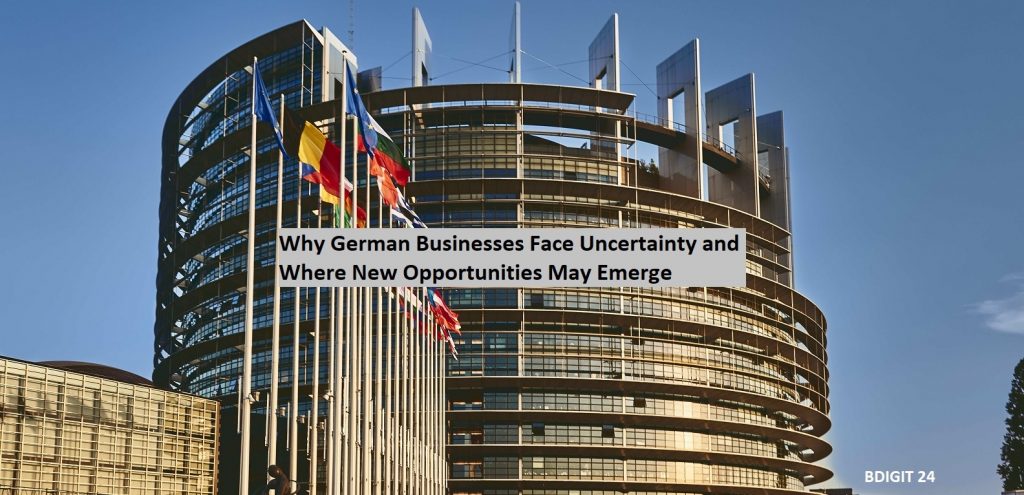Why German Businesses Face Uncertainty and Where New Opportunities May Emerge
Germany, Europe’s largest economy, stands at a pivotal moment in 2025. After two years of economic contraction, the country is grappling with both short-term shocks and deep-rooted structural challenges. As new government policies take shape and global trends shift, German businesses are navigating a landscape filled with uncertainty—but also new opportunities for those ready to adapt.
The State of the German Economy in 2025
Recent forecasts paint a sobering picture. The Roland Berger Institute projects Germany’s GDP will grow by just 0.4% in 2025, lagging behind other G20 nations3. This follows a 0.1% contraction in 2023 and a further 0.2% decline in 2024, marking the weakest period for the German economy in over a decade.
Key statistics:
- GDP growth (2025): 0.4%
- GDP contraction (2023): -0.1%
- GDP contraction (2024): -0.2%
- Business sentiment: Only 1 in 8 companies expect “somewhat favorable” prospects; 1 in 3 anticipate “somewhat unfavorable” developments.
What’s Behind the Slowdown?
1. High Energy Costs:
Germany’s energy transition, while environmentally ambitious, has led to some of the highest industrial electricity prices in Europe. This has squeezed manufacturers and made exports less competitive.
2. Administrative Burdens:
Complex regulations and bureaucracy continue to slow down business operations, especially for small and medium-sized enterprises (SMEs), the backbone of the German economy.
3. Global Protectionism:
Rising trade barriers and geopolitical tensions have disrupted Germany’s export-driven model. Key markets like China and the US are less predictable, impacting everything from car sales to machinery exports.
4. Political Uncertainty:
A new federal government has introduced significant policy changes, including a historic deal to loosen borrowing limits and boost public investment. While this could stimulate growth, it also raises concerns about long-term debt and inflation.
Policy Shifts: A Double-Edged Sword
In 2025, Germany’s government, led by Chancellor Friedrich Merz, struck a landmark agreement to relax the country’s strict “debt brake.” This move unlocks €500 billion for defense and infrastructure spending—a dramatic shift from the country’s traditional fiscal conservatism.
Potential benefits:
- Modernized infrastructure: Investments in digital networks, transport, and green energy could boost productivity.
- Stronger defense sector: Increased spending may create jobs and spur innovation in high-tech industries.
Risks:
- Rising public debt: Critics warn that exempting defense spending from borrowing caps could push national debt into the trillion-euro range.
- Inflation pressures: More government spending may fuel inflation, which already remains above the European Central Bank’s 2% target.
Sector Spotlight: Where Are the Bright Spots?
Manufacturing:
Still the engine of the German economy, manufacturing faces headwinds from high costs and weak global demand. However, companies investing in automation and AI are finding ways to stay competitive.
Retail and Construction:
These sectors report the most pessimistic outlooks, with many businesses bracing for lower consumer spending and delayed projects.
The Mittelstand:
Germany’s mid-sized firms are known for their resilience and innovation. Many are pivoting to new markets, embracing digital transformation, and investing in sustainability to weather the storm.
Real-World Example: How One Company Is Adapting
Consider a mid-sized German machinery manufacturer that saw export orders drop by 15% in 2024. By investing in energy-efficient production lines and expanding into Southeast Asian markets, the company stabilized revenues and even grew its workforce by 5% in early 2025. This story is echoed by other SMEs that are quick to innovate and diversify.
What Do German Entrepreneurs Say?
A recent survey found that only 12% of German companies expect favorable business conditions in 2025, while 33% foresee challenges ahead. The mood is cautious, but not hopeless. Many business leaders are calling for:
- Simplified regulations
- Faster digital infrastructure rollout
- More support for innovation and exports
Looking Ahead: Challenges and Opportunities
Challenges:
- Persistent inflation and high energy costs
- Uncertain global demand for exports
- Political debates over fiscal policy and public debt
Opportunities:
- Government investment in infrastructure and defense
- Digital transformation and green technology
- New export markets beyond Europe and North America
Actionable Insights for Business Leaders
- Monitor policy changes: Stay informed about new government programs and funding opportunities.
- Invest in innovation: Automation, AI, and green tech can help offset rising costs and open new markets.
- Diversify exports: Look beyond traditional markets to regions with growing demand.
- Streamline operations: Reduce administrative burdens by adopting digital tools and best practices.
Conclusion
Germany’s business landscape in 2025 is defined by uncertainty, but also by resilience and adaptability. While growth is slow and challenges are many, companies that embrace change and invest in the future can still find success. As the country navigates its economic crossroads, the actions taken today will shape the opportunities of tomorrow.
#GermanyBusiness #EconomicTrends2025 #PolicyShift #GlobalEconomy #BusinessGrowth


